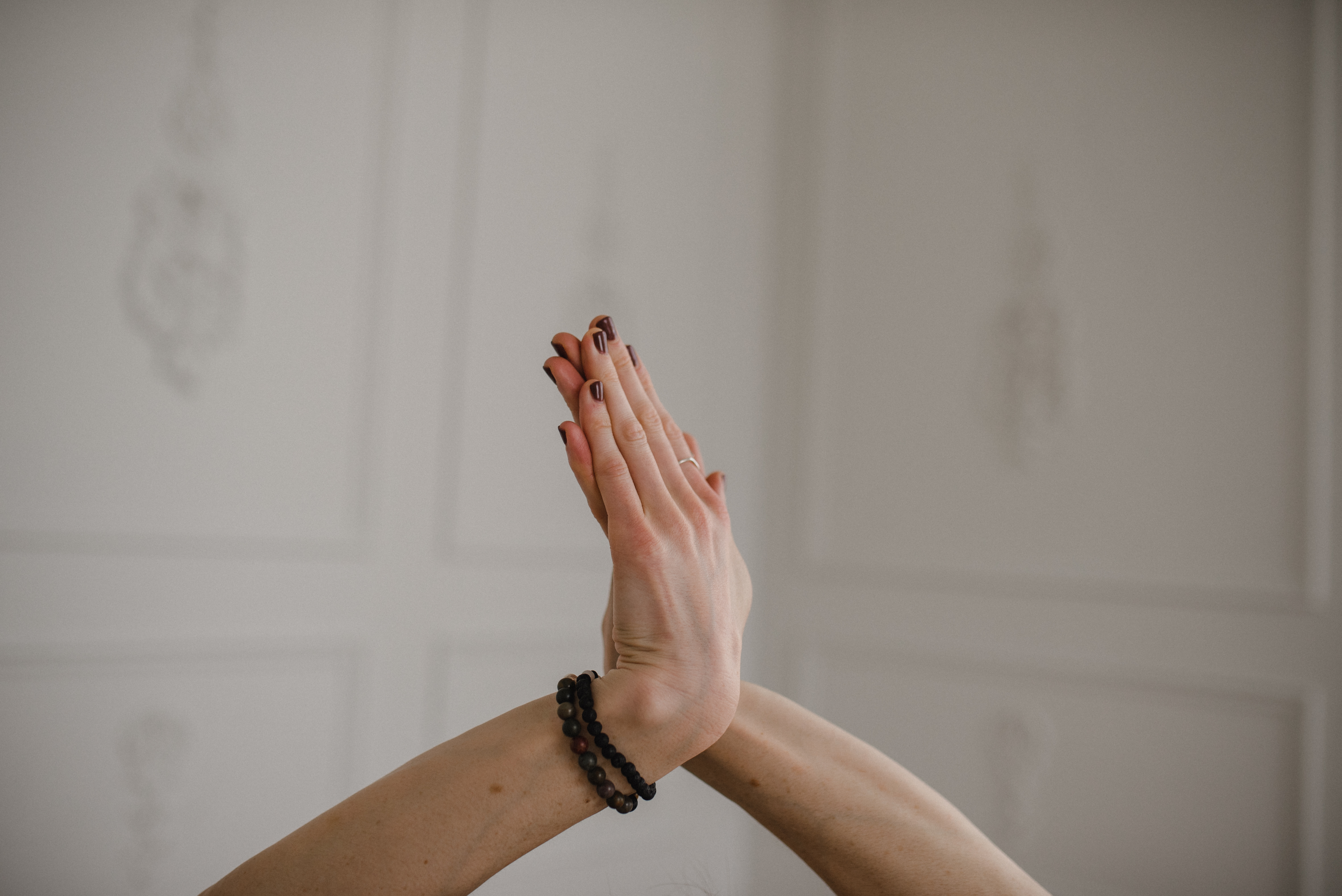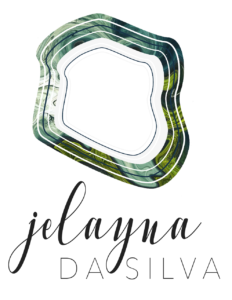
Adjustments are a powerful tool in the hands of a well informed teacher. They are a way in which teachers can assist and guide practitioners into a better awareness of safe asana shapes and better body awareness.
If you’ve ever received a good adjustment, you know it’s downright therapeutic. Some might say revelatory. The first time someone pulled my hips back in downward dog it was nothing short of an Oprah “AHA” moment.
Even so, the culture of yoga adjustments is changing and it’s definitely for the better. We’ve come a long way from the sometimes coercive adjustment style of early ashtanga to the now more anatomically sound, trauma aware adjustments of the late 2010s.
In the past five years we’ve seen the advent of yoga adjustment cards that indicate whether or not the student would like to receive touch. Along with this is the deepening awareness yoga teachers and bodywork practitioners now have in regards to providing body autonomy for clients → Your body. Your choice. Not just a feminist slogan – this catch phrase transcends all genders, all bodies. Got a body? You decide how it should be treated. At least that’s the dream…… #prochoice
Even with all of this forward movement, we still have a long way to go and a lot to learn. There is also the task of not disposing of yoga adjustments entirely. How do we bring yoga adjustments further into the 21st century without throwing the baby out with the bathwater?
1) Trauma Informed Adjustments — We have just begun to scratch the surface of how very real trauma and abuse influences our day to day existence. If you have experienced trauma, it lives in the body, triggers emotions and reactions that are learned behaviors stemming from past events. It does not go away overnight, or even fully for that matter. It’s after effects may lessen over time, but it is usually a wound that leaves an invisible scar. It permeates a person’s existence and must be treated with respect. It is a burden that is best acknowledged, worked with, and through. Most importantly, it is up to the person who has experienced the trauma to dictate the terms of their treatment. If you’re interested in learning more about this subject, there are Yoga Teacher Trainings that now incorporate this knowledge into their curriculum. Mosaic Yoga in Toronto is a prime example of this new wave of trauma aware yoga teaching.
Adjustment cards are paramount for trauma informed teaching. Allowing students to refuse touch in a discreet manner lets them take back control, a thing which often feels lost or stolen in the aftermath of trauma. It is the teacher’s job to respect these boundaries. Also, instructors must work on creating a safe space emotionally for practitioners by using their words. Which is a perfect segue…
2) Adjusting Verbally – Use your words — Invited physical adjustments when done well are undeniably useful. Verbal cues can be just as powerful. Not only are they impactful, they are less invasive and much more sustainable for the teacher.
It takes a lot of effort to adjust upwards of 15 to 20 bodies per class. And teachers don’t get paid extra per adjustment *cough*. Not only that, but energetically who knows what you end up encountering? There have been times I’ve adjusted a person and felt so heavy, almost downtrodden afterwards. If you’re an empath, you know what I’m talking about. It’s also a two way street. If I’m in a funky head space, feeling depleted or sad then I refrain from touching people. I do this to protect my energy and the students’ energy.
So if you’re not using touch — use your words. Veer away from all or nothing language. Ultimatums in a yoga class make my warning bells fire. Instead, giving options for people to select from provides an atmosphere of relaxed freedom. One in which students can feel encouraged to discover their capabilities, as well as meet their own needs. Saying things like you have the CHOICE to do the vinyasa or just rest in downward dog. LET GO of expectations. CONSIDER placing the hands forward of the shoulders in table top. Curating words that facilitate a more liberal, yet held experience. It is a fine balance of guiding movements and giving space to explore.
People end up sharpening their auditory skills. As the teacher, you save energy and exercise your verbal creativity.
With that said, if I could put a plug in for less flowery language? If phrases like “let your pelvis blossom like an early spring rose” are being spoken in a breathy, whispery tone I am 100% leaving the room. That type of language isn’t direct and is just plain hard to understand. How is the beginner yogi in the back of the room supposed to make their pelvis blossom!? Say what you need to in concise terms.
Talk to people normally. Please leave the affected tones for the coffee house open mic.

3) The healing power of safe, invited touch — I’m in the thick of teaching yoga. Being on the front lines by working at multiple studios across the GTA I get a pretty good cross section of what people prefer. In my estimate, based on what I’ve observed, 85% to 90% of yoga practitioners welcome adjustments. “Yes please adjust me” cards are definitely in the majority. To me, this speaks to the healing power of safe touch.
An epidemic of loneliness is the current scourge of modern life. Australia went so far as to appoint a Minister of Loneliness. This issue is no laughing matter. We are communal creatures made to crave connection. Hell, there are businesses that offer public cuddles and hugs because we are so deprived of comforting human touch. Massage, yoga adjustments, a foot rub during a pedicure – these are all safe and welcome ways people can use to fill their often malnourished appetite for touch.
4) *FOR TEACHERS* Adjust to Inform using proprioception. Try not to do the work for the student. Yoga teachers are often natural helpers. They usually get into this gig to serve and uplift others. Yoga changed their lives. They’re hopeful it will provide a similar positive experience. Because of this, danger of teacher burnout is high.
I’m guilty of this myself. I’ve watched many fellow teachers skirt the line of empathic and physical fatigue because we are doing way too much for our students. Draining ourselves of our personal resources. We have to learn how to help without harming ourselves. It is a delicate task of giving just enough assistance so as to not take the work away from the student. Students need to learn to do the practice for themselves.
My father once gifted me with a phrase that rings true when it comes to adjustments,
“Give people the dignity of falling. Give them the dignity of their own struggle”.
When we see someone struggling in a posture, before we approach we must ask ourselves as teachers “Am I going in to rescue them, or to give them what they need to get themselves out of this predicament?” Coincidentally, this is directly applicable to relationships off the mat. (you’re welcome)
When I took my hands on adjustment training at Downward Dog Yoga Studio back in 2014, we talked at length about proprioception based adjustments; anatomically informed ways of guiding people into feeling and finding the yoga postures for themselves. It’s all based on a kinetic way of learning shapes in the body and committing it to muscle memory. Ultimately the student needs to do the work. Designing your yoga adjustments to shine a light on a possible pathway and then allowing the student to get themselves through the practice becomes your task as the teacher. This is much easier said than done. But with time, and a willingness to alter your approach often, the results can elicit many an Oprah “aha” moment for students.
Give a person a fish or teach a person to fish? It’s up to you.
Of course there is the wonderful feeling of a neck rub in sivasana, or hips being pressed on in child’s pose. Massage based adjustments are just as important as the adjustments that help students find the work. Comfort can never be understated.
I’m of the mind that physical adjustments, if allowed to continuously evolve based on the information at hand, will always have a place in the world of yoga.
Touch within the context of a yoga class is a powerful thing. Using it wisely, sparingly and with good, well educated intention is a healthy way to move into the future. Adjustments are a give and take dance that deserves to be entered into mindfully, and with careful precision. Learning to dance with beauty and grace takes time and the willing participation of both partners. Teachers and students are in this together. So let’s dance and do our best not to step on each other’s toes.

Thoughtful, informative and well written!